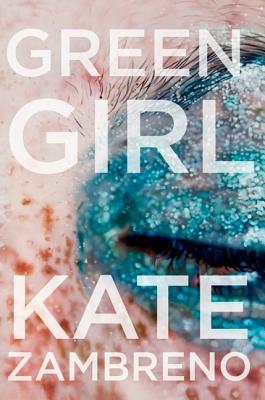Consider the shop girl.
She’s on her feet all day, circling the floor or standing behind the counter, appeasing indecisive old ladies, harried mothers with screaming children, impatient business men, lecherous supervisors. She’s repeating herself, stocking and restocking, bored, waiting, often temporary. She’s apathetic Therese working at the doll counter for the holidays in The Price of Salt, or lonely Mirabelle in Shopgirl, “selling things that nobody buys anymore.” She’s the hot lingerie sales clerk in Christmas Vacation, getting salivated over by a sweaty, breathless Chevy Chase.
In Kate Zambreno’s Green Girl, she’s Ruth, a young American ex-pat living in London and working at a store she calls Horrids (more affectionately known as iconic London department store Harrods) selling a perfume named Desire. She lives with her best friend Agnes, a seductive and obnoxious Australian redhead who dresses like Golden Age movie stars and is always calling things “BIZ-arre.” They go to movies and clubs, groom themselves in front of their mirror, and seek out the attention of men who are generally pretty awful and/or mundane. At one point Ruth dates a Horrids coworkers she calls “holy boy,” a genuinely sweet guy who worships her and tells her stories about suffering female mystics, but she grows bored and dumps him, then subsequently quits her job.
That’s pretty much the gist of Green Girl, as far as plot goes. We follow Ruth as she goes about her daily routine, as she toggles between wanting attention and abhorring it, as she fights boredom but seems to sink willfully into depression. We watch curiously and often cringingly as she stumbles along the path to becoming someone. That might sound boring but trust me: Green Girl is impossible to put down. Zambreno writes in short, lyrical, unpunctuated spurts, giving the book a fierce momentum. It is told from the point of view of a mysterious unnamed narrator who could be Ruth’s dead mother or an older Ruth, or maybe just Zambreno herself, speaking directly of, and sometimes to, her creation. There is also the ghostly HIM of Ruth’s past whose memory haunts her thoughts constantly as she walks around the city: “She walks as if HE is watching her…the vision of HIM follows her everywhere.”
And then of course there’s Ruth, who’s so familiar in the best and most revolting ways. In her Vanity Fair review of the book, Elissa Schappell says that Ruth “infuriated and seduced” her, and Roxane Gay called her “as vicious as she is vulnerable.” I borrowed a friend’s copy when I first read Green Girl, and the next day she texted me to ask if I “hated the heroine yet.” Ruth is self-absorbed, misguided, and passive; she’s one of those pesky unlikable female protagonists that we don’t quite know what to do with. Ultimately, I think, she’s just young and uncertain and in foreign territory. “Ruth is used to being a tourist,” Zambreno writes, “Being a girl is like always being a tourist, always conscious of yourself, always seeing yourself as if from the outside.”
Ruth is also an urban wanderer, constantly walking the streets of London, sitting in café windows, frequenting parks. In an essay in the back of the book, Zambreno explains that she wanted to “resurrect a female walker in a contemporary urban space.” She does just that, giving one of the realest depictions I’ve read of being a modern-day woman in the city. Every time Ruth emerges from the train stop by her house, a “wild-eyed scarecrow of a man” is there, asking her for 40p. A skinny teenager with a gelled flat-top yells at her to smile when she passes her landlord’s restaurant. Heroin addicts eye her on the street (“Need some help with those bags, pretty lady?”) After Ruth cuts off all of her hair, a man stops in front of her table at a café and looks at her as if trying to figure something out. Then he snaps his fingers and points at her:
“Bonjour Tristesse! he says.
Yes she says. Modestly, eyes lowered, surrendering herself to his insatiable gaze.”
Catherine Deneuve, Emily Dickinson, Virginia Woolf, Colette and other fearsome ladies make appearances in the book, by way of the quotes that Zambreno uses to begin each slender chapter. Hamlet’s Polonius is also in there, offering the quote that gives the book its title: “You [Ophelia] speak like a green girl, unsifted in such perilous circumstance.” These quotes hover to the sides of the chapters like they’re in dialogue with Zambreno’s text, they aren’t tiny footnotes crammed at the end of the page. They don’t break up the narrative so much as fill holes in the story, and give Ruth context through other women in history.
I love books that are chuck full of references like this because I always come away from them with a whole new reading list. At the top of my list after reading Green Girl was Walter Benjamin’s Arcades Project, which is quoted and referenced the most throughout the book. When I went to the bookstore to buy a copy the girl behind the counter nodded at it and told me it was “hard read.” She seemed to approve.





